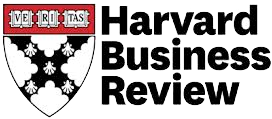By Judith E. Glaser | Computer World
Published: December 11, 2006
Technologies enable us to dissolve boundaries of space and time and connect us in exciting ways, but IT leaders still face the same old challenge: How to dissolve boundaries among colleagues, build trust and engage our people.
Old-style thinking suggests that leaders should have the answers and direct and guide the organization to solutions. Old-style leaders expect solutions to come from the top of the organization and be given to the employees for implementation. New-style thinking says that leaders don't have all the answers. Their job is to initiate conversations to come up with the strategies for success. I call this new inclusive approach "we-centric" leadership.
Vital Conversations
 Judith E. Glaser |
We-centric leaders are harvesters of change. They focus on creating environments that enable people to feel connected and focused on creating the future together. They lift people out of fear, aloneness and caution, and create a feeling that "we're all in this together." They are masters of engagement -- and their tools are what I call, "vital conversations."
Vital conversations engage colleagues and encourage them to work in concert. They foster a spirit of learning, growing and nourishing that leads to higher levels of productivity, quality and breakthrough performance.
Vital conversations shift the overall feel of the environment from withholding (territoriality and noncollaboration) to sharing (openness and cooperation). When leaders withhold, that's I-centric thinking. When they share knowledge and power, they put learning before everything and engender trust in individuals and in the group's ability to reach its destination.
As an IT leader, managing vital conversations is pivotal to your success. Your practices and attitudes should include the following:
- Open boundaries: Ask yourself how you can open the space for sharing while preserving individual responsibilities.
- Open exchange of information: How transparent are your project strategy and goals? How easy is it for people to get information from one another?
- Respect for individuals: Acknowledge the value each person brings; support the work everyone contributes.
- Promote individual freedom: Create an environment where people take the initiative to experiment, test new concepts, launch individual projects and seek out others who can contribute to the effort.
- Give credit fairly: Make a point to recognize the contributions of others, whether small or large, whether they affect one person or the entire organization.
Also, be sensitive to language that causes people to get into territorial and noncollaborative behaviors. Make a conscious effort to remove the following phrases from your conversations:
- "I'm the only one who ..."
- "What good is that?"
- "I don't trust you."
- "What in the world were you thinking?"
- "It's none of your business."
When you are aware of the impact that your words have on others and you replace words that have negative connotations with ones that offer support, you will see dramatic effects on morale and performance. Work the following concepts or phrases into your conversations:
- "Team up."
- "Join forces."
- "Work together."
- "Pool resources."
- "Catalyze."
As a leader of the future, you can create environments where all team members can contribute their talents and potential. Potential is often invisible and yet to be discovered. It's born out of the healthy interactions of one person with another. Conversations can be a fist or a handshake. They can threaten or invite, stymie or guide. Conversations can separate people ("Do not enter") or bring them together ("This way to the meeting"). Twenty-first-century leaders use conversations to create the vital connections that enable us to join hands and share the wonder of being on a common journey.
See the complete 2007 Premier 100 IT Leaders special report.
Glaser is the author of Creating We: Change I-Thinking to We-Thinking & Build a Healthy, Thriving Organization, 2005, and The DNA of Leadership, 2006, Platinum Press Inc., an imprint of Adams Media. She is also CEO and president of Benchmark Communications Inc.








